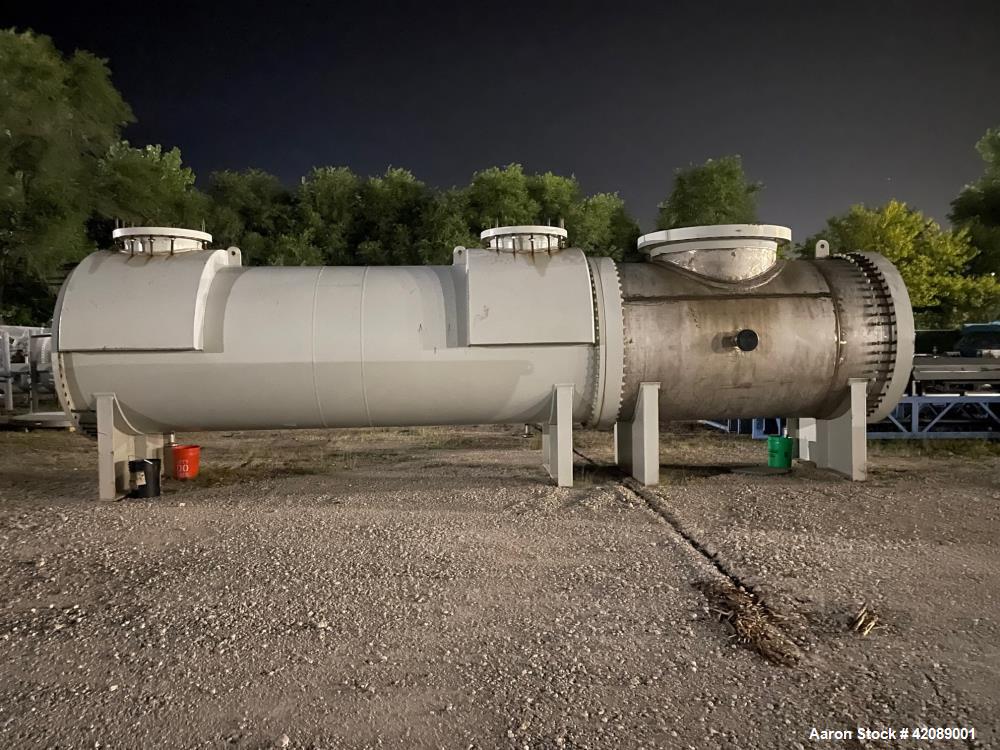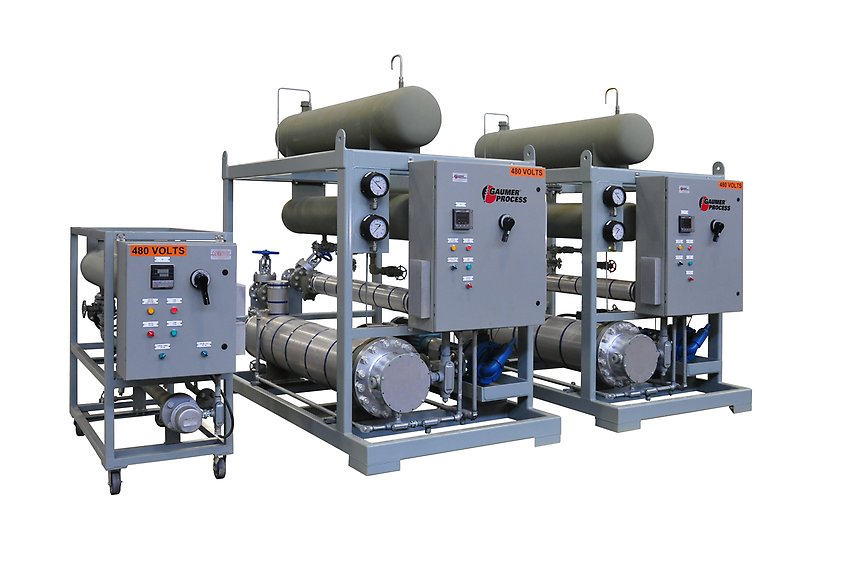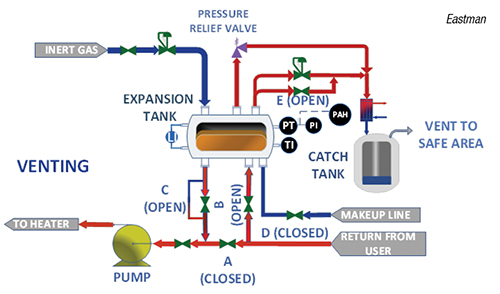5 Ways DVS Heat Transfer Systems Improve Energy Management in Automotive
A Comprehensive Guide to Picking the Right Heat Transfer Equipments for Your Needs
Choosing the appropriate Heat transfer system is crucial for operational effectiveness. Various systems satisfy various demands, affected by factors such as temperature level variety and liquid kind. Comprehending the concepts behind Heat transfer, such as transmission, radiation, and convection, is critical. Additionally, assessing energy sources and maintenance practices can affect long-term performance. A closer evaluation of these factors to consider exposes how to customize a system to certain requirements. What should one prioritize in this facility decision-making process?
Comprehending Heat Transfer: Secret Principles and Principles
Although Heat transfer might look like an uncomplicated concept, it includes an array of concepts that are basic for effective system style. Recognizing these concepts is essential for developers and engineers who intend to enhance thermal performance in different applications. Conduction, for circumstances, involves the transfer of Heat via solid products, while convection refers to the activity of Heat within fluids. Radiation, an additional key concept, describes just how Heat can be moved via electromagnetic waves. Each of these mechanisms plays an essential function in determining just how energy relocates within a system. By extensively realizing these concepts, experts can make informed decisions, ensuring that Heat transfer systems operate efficiently and meet the details needs of their applications
Sorts Of Heat Transfer Systems: An Overview
Recognizing the concepts of Heat transfer lays the groundwork for discovering the different sorts of Heat transfer systems readily available. Heat transfer systems can be classified largely right into three types: radiation, transmission, and convection. Conduction involves Heat transfer through strong products, depending on direct contact in between bits. Convection, on the various other hand, takes place in liquids (gases and fluids) where the movement of the fluid itself helps with Heat transfer. Radiation includes the transfer of Heat with electro-magnetic waves and does not need a medium, permitting it to happen in a vacuum. Each kind of system has distinctive attributes and applications, making it necessary for individuals and companies to thoroughly assess their certain needs when choosing one of the most suitable Heat transfer service.
Applications of Heat Transfer Solutions in Numerous Industries
Heat transfer systems play a necessary function across different markets, impacting performance and product high quality. In commercial manufacturing procedures, they help with accurate temperature level control, while in food and beverage processing, they assure safety and preservation. Furthermore, cooling and heating and climate control systems depend greatly on effective Heat transfer to keep comfy settings.
Industrial Manufacturing Processes

Numerous industrial manufacturing procedures depend greatly on reliable Heat transfer systems to maximize productivity and improve item quality. In sectors such as metalworking, Heat exchangers play a vital duty in keeping perfect temperatures throughout welding, casting, and creating. These systems ensure consistent Heat distribution, which is important for accomplishing wanted product residential or commercial properties. In the chemical manufacturing sector, Heat transfer systems facilitate exact temperature level control throughout responses, influencing return and security. Moreover, in fabric production, reliable Heat administration is very important for coloring and completing procedures, influencing color uniformity and textile top quality. By selecting ideal Heat transfer technologies, producers can improve power efficiency and minimize functional prices, inevitably leading to a more affordable and sustainable production atmosphere.
Food and Beverage Handling
Efficient Heat transfer systems are just as vital in the food and drink handling market, where keeping perfect temperature levels is essential for food security and high quality. These systems play a necessary duty in processes such as pasteurization, sterilization, and food preparation, ensuring that products are safe for consumption and preserve their dietary worth. Heat exchangers, as an example, effectively transfer Heat between liquids, enhancing energy use while reducing temperature level fluctuations. Additionally, refrigeration systems are essential for extending and protecting disposable things service life. The choice of Heat transfer innovation straight affects functional efficiency and product stability, making it essential for food and beverage producers to pick the ideal systems tailored to their particular handling needs. This careful selection inevitably adds to customer complete satisfaction and food security.

Heating And Cooling and Climate Control
While numerous markets count on Heat transfer systems for performance, HEATING AND COOLING (Home Heating, Air Flow, and A/c) plays a crucial role in keeping interior climate control across numerous setups. These systems utilize Heat transfer concepts to control air, temperature level, and moisture high quality, ensuring comfort and safety and security in property, industrial, and commercial atmospheres. Effectively developed HVAC systems enhance energy effectiveness, decrease operational costs, and reduce ecological influence. In commercial structures, as an example, reliable environment control adds to worker productivity and client contentment. In industrial applications, heating and cooling systems aid maintain suitable problems for tools procedure and item preservation. Selecting the right Heat transfer system is important for conference certain climate control requirements and achieving general system performance.
Examining Energy Sources for Heat Transfer Equipments
In examining power sources for Heat transfer systems, a contrast of renewable resource choices and fossil gas factors to consider is necessary. Renewable sources, such as solar and wind, offer lasting options that can minimize environmental effect. Alternatively, fossil gas continue to be widespread as a result of their well-known framework and power thickness, motivating a cautious evaluation of both options.
Renewable Energy Options

Fossil Gas Considerations
Evaluating fossil fuel factors to consider is crucial for the performance and sustainability of Heat transfer systems. Nonrenewable fuel sources, such as all-natural gas, oil, and coal, are conventional energy resources that supply significant Heat outcome, making them popular choices for commercial and domestic applications. However, their environmental effect, consisting of greenhouse gas discharges and source depletion, elevates concerns. When selecting a warm transfer system, it is essential to analyze the accessibility, expense, and regulatory variables related to these gas. Additionally, the efficiency of fossil fuel systems have to be thought about, as greater performance can minimize some environmental disadvantages. Inevitably, a balanced method weighing efficiency and sustainability can guide find out here decision-makers toward the most appropriate Heat transfer option for their specific requirements.
Variables to Think About When Picking a Warmth Transfer System
Picking a proper Heat transfer system calls for mindful factor to consider of various factors that can considerably affect effectiveness and performance. One crucial aspect is the operating temperature level range, which dictates the materials and layout suitable for the application. Additionally, the type of fluid utilized in the system-- whether gas their website or fluid-- influences Heat transfer effectiveness and compatibility. The system's dimension and ability must straighten with the details demands of the procedure to stay clear of inefficiencies. Power resource accessibility is additionally essential, affecting operating expense and sustainability. The installment setting, consisting of area constraints and availability for maintenance, plays a significant duty in system option. Lastly, governing conformity and safety criteria need to be taken into consideration to ensure the system fulfills all legal needs.
Maintenance and Performance Optimization for Heat Transfer Systems
Preserving Heat transfer systems is essential for making certain maximum performance and durability. Regular maintenance tasks, such as cleaning up Heat exchangers and checking insulation, help prevent performance losses due to fouling and thermal linking. Additionally, monitoring system specifications, consisting of pressure and temperature level, enables for very early detection of abnormalities, decreasing downtime and costly repairs. Applying a precautionary maintenance timetable can enhance performance and expand the lifespan of parts. In addition, upgrading to advanced control systems can enhance operational effectiveness by adjusting to varying lots and problems. By prioritizing upkeep and efficiency optimization, drivers can accomplish minimized energy intake, reduced functional costs, and enhanced total system reliability, ultimately bring about better source usage and a much more sustainable operation.
Future Patterns in Heat Transfer Technologies
As industries increasingly prioritize sustainability and energy efficiency, future fads in Heat transfer technologies are set to undergo significant changes. Advancements such as innovative products, consisting of carbon nanotubes and nanofluids, guarantee improved thermal conductivity and efficiency. Furthermore, the assimilation of renewable resource sources into Heat transfer systems is obtaining energy, promoting environment-friendly options. Smart innovations, including IoT sensors, are expected to change surveillance and control, allowing real-time information analysis for optimized efficiency. Furthermore, the advancement of small and modular systems will certainly promote less complicated setup and maintenance, dealing with diverse applications. These innovations suggest a shift in the direction of more lasting, efficient, and versatile Heat transfer solutions, lining up with global energy goals and ecological standards.
Frequently Asked Inquiries
What Are the Environmental Influences of Heat Transfer Solutions?
The environmental effects of Heat transfer systems can include greenhouse gas discharges, energy usage, and prospective thermal air pollution. Additionally, inappropriate disposal of materials and inadequacies can add to source deficiency and environment interruption.
Exactly how Do I Calculate the Cost-Effectiveness of a Warmth Transfer System?
To calculate the cost-effectiveness of a warmth have a peek at this website transfer system, one have to examine initial expenses, operational costs, maintenance needs, and energy performance, comparing these factors against the anticipated life-span and efficiency of the system.
Can Heat Transfer Systems Be Made Use Of in Residential Setups?
Heat transfer systems can indeed be used in residential settings. They supply effective home heating and cooling down options, making homes a lot more comfy while potentially reducing energy costs. Their flexibility permits various applications in domestic atmospheres.
What Safety And Security Rules Relate To Heat Transfer Equipments?
Safety guidelines for Heat transfer systems normally include guidelines on procedure, upkeep, and setup. Compliance with regional structure codes, maker specifications, and industry standards is necessary to ensure secure and efficient system performance in numerous applications.
How Do Various Products Affect Heat Transfer Efficiency?

Conduction, for circumstances, entails the transfer of Heat through strong materials, while convection refers to the motion of Heat within fluids. Comprehending the principles of Heat transfer lays the groundwork for exploring the various types of Heat transfer systems offered. Heat exchangers, for circumstances, successfully move Heat in between liquids, maximizing energy use while lessening temperature level changes. In examining energy sources for Heat transfer systems, a contrast of eco-friendly power choices and fossil fuel considerations is important. Steels, such as copper and light weight aluminum, conduct Heat efficiently, whereas insulators like rubber and glass reduce down Heat circulation.